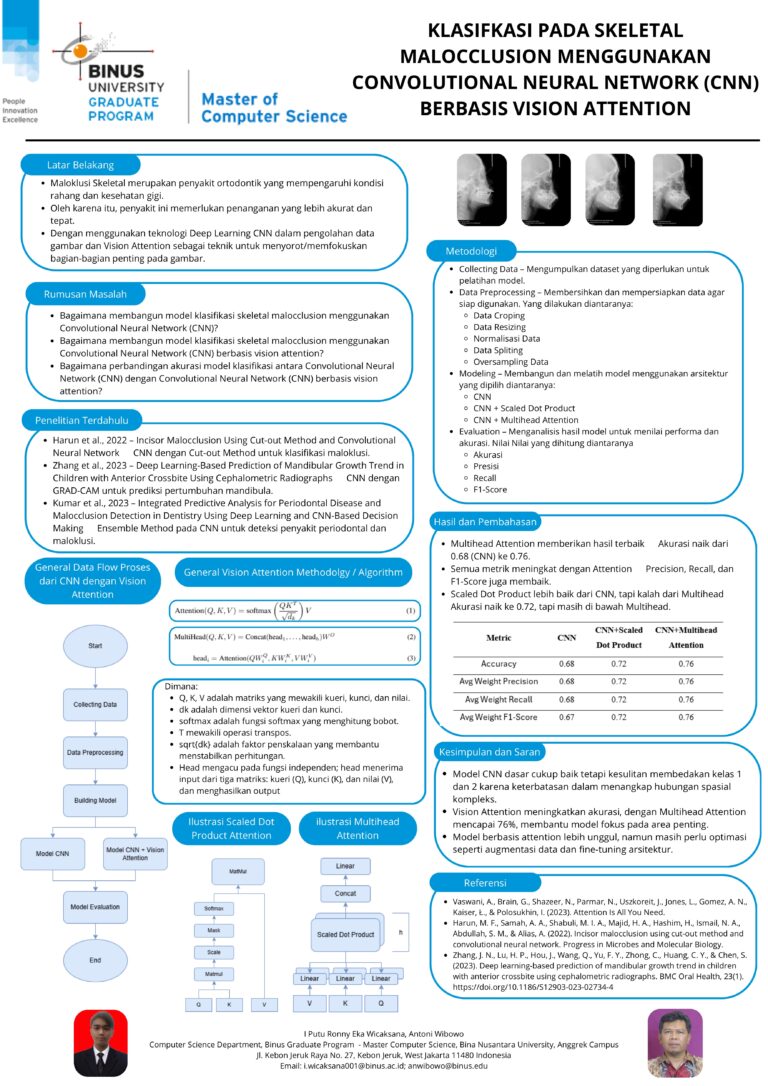Klasifkasi Pada Skeletal Malocclusion Menggunakan Convolutional Neural Network (CNN) Berbasis Vision Attenion
Skeletal malocclusion, a common orthodontic condition, affects jaw function and
dental health, often caused by genetic factors, abnormal growth, bad habits, or
trauma. Conventional diagnostic models frequently struggle to generalize across
diverse datasets, leading to overfitting and poor test performance. This study aimed
to enhance diagnostic accuracy by incorporating Vision Attention mechanisms into
a Custom Convolutional Neural Network (CNN) to help the model focus on critical
regions in dental and jawbone X-ray images. This research developed a Custom
CNN tailored for malocclusion classification. The model was evaluated with and
without Attention mechanisms, specifically Scaled Dot Product Attention and
Multihead Attention, to determine their impact on classification performance.
Results showed that the Custom CNN without Attention achieved an accuracy of
0.67, while integrating Scaled Dot Product Attention increased accuracy to 0.72.
Multihead Attention further improved performance, achieving the highest accuracy
of 0.74. Additional evaluation metrics, including precision, recall, and F1-score,
demonstrated that Attention mechanisms significantly enhanced the model’s ability
to differentiate malocclusion classes. Notably, Multihead Attention yielded the best
balance across all classes, improving recall for Class 1 from 0.35 to 0.69 and
precision for Class 2 from 0.58 to 0.71. However, challenges remain in recall
optimization for certain classes due to imbalanced data distribution. These findings
suggest that Attention mechanisms, particularly Multihead Attention, enhance
model performance by improving feature extraction and classification accuracy.
Future research should focus on expanding dataset diversity and implementing
advanced augmentation techniques to further optimize diagnostic reliability in
clinical settings.
keywords: Deep Learning, Skeletal Malocclusion, Vision Attention, Classification,
Computer Vision




Comments :